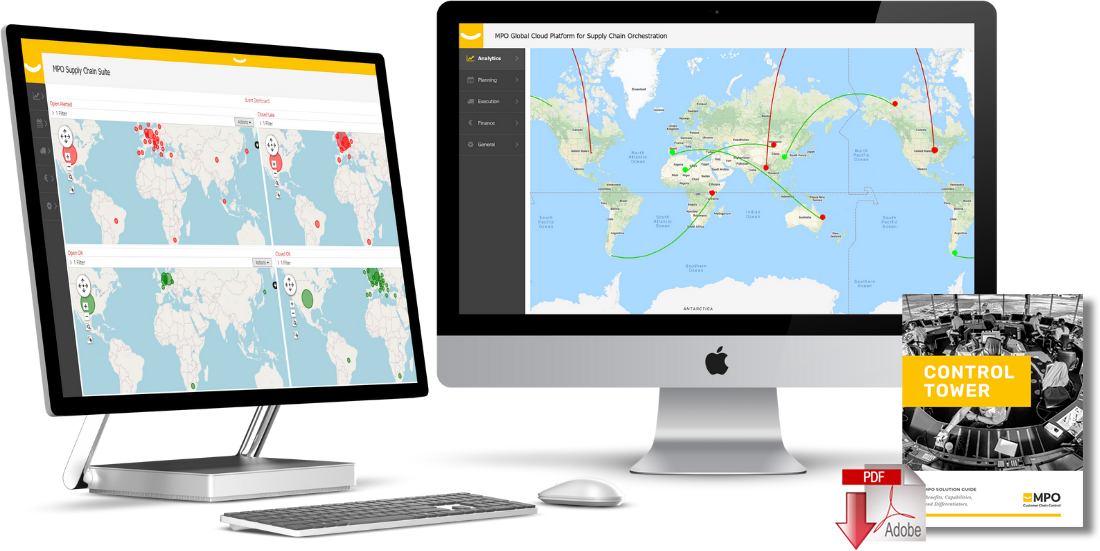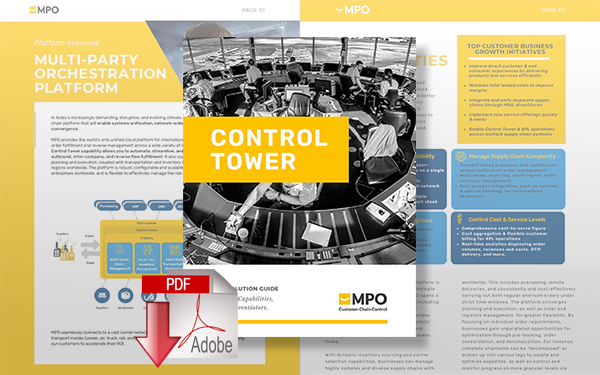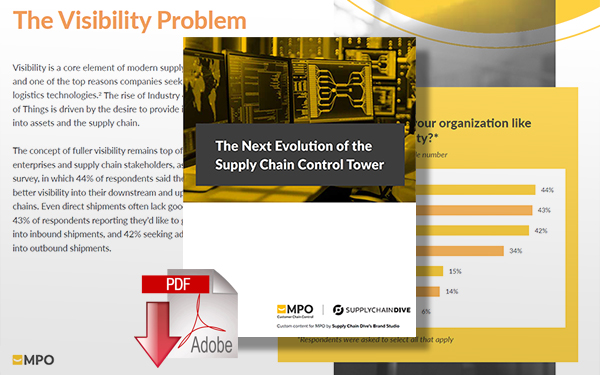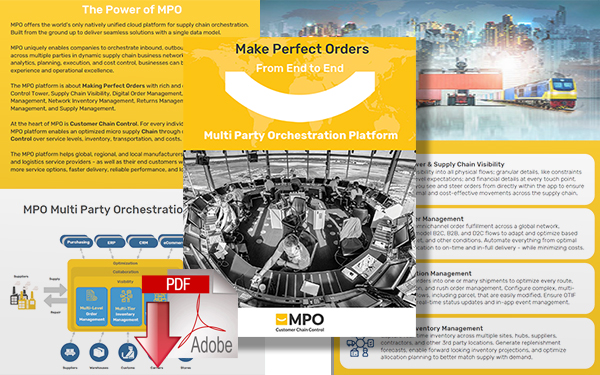Strategic Inventory Management: An Alternative to Safety Stock vs Just-in-Time

How can businesses today achieve and maintain high customer satisfaction without having an abundance of excess inventory sitting on their balance sheet?
Lean and Just-in-Time Inventory Strategies
The pandemic has, in a sense, redefined the notion of safety stock. Safety stock used to rely on predictability: Predictable supply, predictable sourcing patterns, predictable labor throughout the supply chain, etc.
Current and ongoing global economic issues, such as tariffs and trade wars, the situation between Russia and Ukraine, as well as pandemic constraints, and global oil supplies have shattered that cadence with a significant impact on logistics costs and have strained lean and just-in-time (JIT) inventory strategies. And this, of course, is its own quandary: Everyone wants to have safety stock, but no one wants those inventory carrying costs – especially in light of the recent and unprecedented cost increases.
No one wants to have excess product collecting dust in their warehouses, just to meet a potential spike in their customers’ demand or in the eventuality that some leg of their supply chain fails. Yet, the fact remains that, whether it’s during the pick-pack-ship process, the transportation, the port transit, or the customs clearance – any one of those facets can fail and have been failing at unprecedented rates.
So, how can businesses today achieve and maintain high customer satisfaction without having an abundance of excess inventory sitting on their balance sheet?
An Alternative to Balancing Safety Stock With JIT Inventory
It begins with visibility
Every facet of the supply chain, today, is experiencing stress. Gaining visibility has become a priority for many executives, and the urgency stems beyond transportation visibility. Inventory to sales ratios have dropped to historic lows, stockouts have risen to historic highs, and customer satisfaction falls in correlation to those stockouts.
Visibility into inventory, orders, and transport lets partners and customers know where their products are at any given point in time. The greater the visibility – that is, the more it extends over the full order lifecycle – the faster corrective action can be made in supply chain execution, the higher your customer satisfaction will be, and the more reasonable your inventory carrying costs will be.
To VMI or not to VMI
With customer demand rising alongside disruption and material shortages, businesses are looking for opportunities to shorten lead times and prevent missed sales opportunities due to stockouts.
According to Tom Nightingale, CEO at AFS Logistics, “one of the more common approaches to dealing with this situation is to push more vendor-managed inventory (VMI).” However, going this route may not be the best option, as VMI comes at a cost. “Suppliers aren’t banks; they are going to charge you more to execute a VMI strategy,” explains Tom.
“The goal of getting it off your balance sheet is achieved through VMI, but it typically comes at a much higher cost, and often still with all the lumpiness that results from a disrupted supply chain like we’re living in right now.”
While it’s challenging to toe the line between the safety stock approach and the just-in-time strategy, the best solution will come down to a strategic decision on the part of the cargo owner or brand owner. Mr. Nightingale explains that the decision will depend on the level of customer satisfaction a business is attempting to solve. “If they’re trying to solve for high customer satisfaction, they’re going to have to either carry high inventory or find an alternative means.”
A New Approach to Network Inventory Management
By partnering with MPO and Taulia (a financial technology business), AFS Logistics is offering such an alternative to its customers. The partnership is enabling a network inventory management solution that allows AFS to carry inventory for their customers, using the MPO supply chain control tower for visibility and management, and leveraging the global footprint of warehouses to take inventory off their customers’ and suppliers’ balance sheets. It differs from the VMI approach in that it leverages bank-based financing at what are still exceptionally low-interest rates and therefore a reasonable cost base.
“It alleviates the lumpiness that comes from transportation and warehousing-related issues by putting inventory right at the last mile,” explains Nightingale.
“Getting it as close to the point of consumption as humanly possible with a global network of warehouses that are absolute experts at handling that customers’ products.”
Oftentimes, these are the same warehouses that have been used historically but on a more cost-effective basis. The solution acts as a kind of shock absorber with nearby buffer stocks available for just-in-time delivery.
The net of this approach is lower inventory carrying costs, higher throughput, and higher customer satisfaction. “We’re helping businesses meet their customer satisfaction goals and perform well in what is an increasingly competitive market.”
Indeed, this service will also allow manufacturers to order in higher quantities, thereby producing supplier manufacturing and transportation efficiencies – which, as an added bonus, contributes to a more sustainable supply chain.
Is the solution right for your business?
In Tom’s estimation, the solution will be ideal for businesses that have high values of goods and large financial implications for carrying those inventories on their books for extended periods of time. “Typically, inventory values are very high where the value to weight ratio tends to be high, such as with vehicles, high-end retail, and electronics,” explains Nightingale.
Lead times will also play a role. For instance, manufacturers may need to produce consistent runs of products and will need to house that inventory, as consumption occurs at a different pace than supply. “Because of the nature of the production process, supply typically has to run for a longer stretch, and tends to accumulate in inventory for a period of time, and then sit,” says Tom.
He explains that the physical distance of the supply chain is another driver. “If you’re producing electronic components in Thailand, consuming them in the US market, waiting until the last possible minute to make the purchase, and the port backs up at Long Beach or there’s a flood in Thailand, then these irregularities in the supply chain force you to accumulate more inventory or produce in larger batches to smooth out the supply chain.”
Expanding stock locations through such a solution will also enable businesses to have inventory placed as close to their customers as possible, which is key to driving same-day delivery at scale. “In some cases, like a retail market, that may be same day or next day delivery,” adds Tom.
“In the world of e-commerce, Amazon has driven a level of expectation about buyer behaviors and buyer impatience for product - some of which carried over into the B2B world. The demand may not necessarily be for the same day or the next day, but there’s urgency. If, for example, I’m ordering drives for a server, because mine shows signs of failure, I need the replacement right away. Otherwise, if a server farm happens to go down, we’ve got real problems.”
This urgency extends to many markets and commodities, especially with life-saving equipment in the healthcare industry. “If you’re supporting a medical device supply chain and that machine goes down at the hospital, it’s too expensive for the hospital to carry a lot of backups. But, if we can supply them with a backup the same or the next day, then that’s typically a beneficial thing for both the hospital’s supply chain. It takes the burden of inventory off of the supply chain while still being able to properly care for their patients.”
From a resiliency and risk management perspective, old models like VMI are not cutting it. To learn more about AFS Logistics, Taulia, and MPO's industry-first solution to this network inventory management problem, watch the Talking Logistics episode: Enabling Assurance of Supply in the Global Marketplace.
For more information on the MPO supply chain control tower software and how it can help drive efficiencies, cost savings, and higher service levels for your business, reach out to [email protected], [email protected], or request a demo today.
 As companies become increasingly supply-driven, this episode discusses emerging business challenges and introduces an innovative new offering that's uniquely enabling both buyers and sellers in the supply chain to benefit in ways that VMI models do not allow.
As companies become increasingly supply-driven, this episode discusses emerging business challenges and introduces an innovative new offering that's uniquely enabling both buyers and sellers in the supply chain to benefit in ways that VMI models do not allow.
Related 'Supply Chain Visibility' Resources
Supply Chain Control Tower & Visibility
This Supply Chain Control Tower and Visibility solution guide provides a deeper look into the platform's capabilities and benefits, as well as a practical overview of why a unified and converged approach will make all the difference in running an efficient and cost-effective supply chain that drives superior customer satisfaction. Download Now!
The Next Evolution of the Supply Chain Control Tower
This white paper explores why visibility is a core element of modern supply chain digitization, and a top reason to implement logistics technologies in your supply chain. Download Now!
Multi-Party Orchestration Platform
In this brochure, you'll find a guide to MPO's unified cloud platform for multi-party orchestration, including its rich and flexible solutions: Control Tower, Supply Chain Visibility, Digital Order Management, Transportation Management, Network Inventory Management, Returns Management, Spare Parts Management, and Supply Management. Download Now!
More Resources from MPO
Related Article: What Is End-to-End Supply Chain Visibility?
Article Topics
MPO News & Resources
TMS+ Go Beyond Transport to Optimize Cost, Service, & Resiliency Multi-Party Orchestration Platform When It Comes to Digital Transformation You May Not Be Doing What You Think How Chief Operating Officers are Achieving Results with Supply Chain Software SPARK Matrix Transportation Management System Software Analyst Report Top Trends Driving Change and Technology Strategy Within Logistics & Transportation Management 5 Key Steps for Optimizing your Last Mile Delivery More MPOLatest in Supply Chain
Ask an Expert: How Shippers Can Prep for Hurricane Season Apple Accused of Multiple Human Rights Violations South Korea Finally Overtakes China in Goods Exported to U.S. UPS Struggles in First Quarter With Steep Earnings Decline How Supply Chains Are Solving Severe Workplace Shortages SAP Unveils New AI-Driven Supply Chain Innovations How Much Extra Will Consumers Pay for Sustainable Packaging? More Supply Chain



















